
Satellite Charts
“Satellites Charts” examines current and past artificial satellites orbiting around Earth, pointing out how our terrestrial life became so dependent on what we sent out in space. With topics ranging from space exploration to space pollution, communication, and warfare, the data visualization functions as an index to unlock related stories. More than eight thousand satellites are plotted on the chart: the data show how many satellites are still operational or decayed, who launched them, and in which years.

Displaying such information on a flat design allows the viewer to zoom in and out in time. In about 70 years of space history, we slowly built an extension of Earth's infrastructure above our head, an extra level of data collection and exchange. Satellites are essential technologies that must be constantly safeguarded, especially from human threats: jobs, services, social gatherings, transport, and communications are strictly dependent on the network of artificial bodies monitoring the planet. It is impossible to imagine our current living standards and global connections without the data transmission between satellites and Earth stations. This is what keeps the world spinning.
. . . .
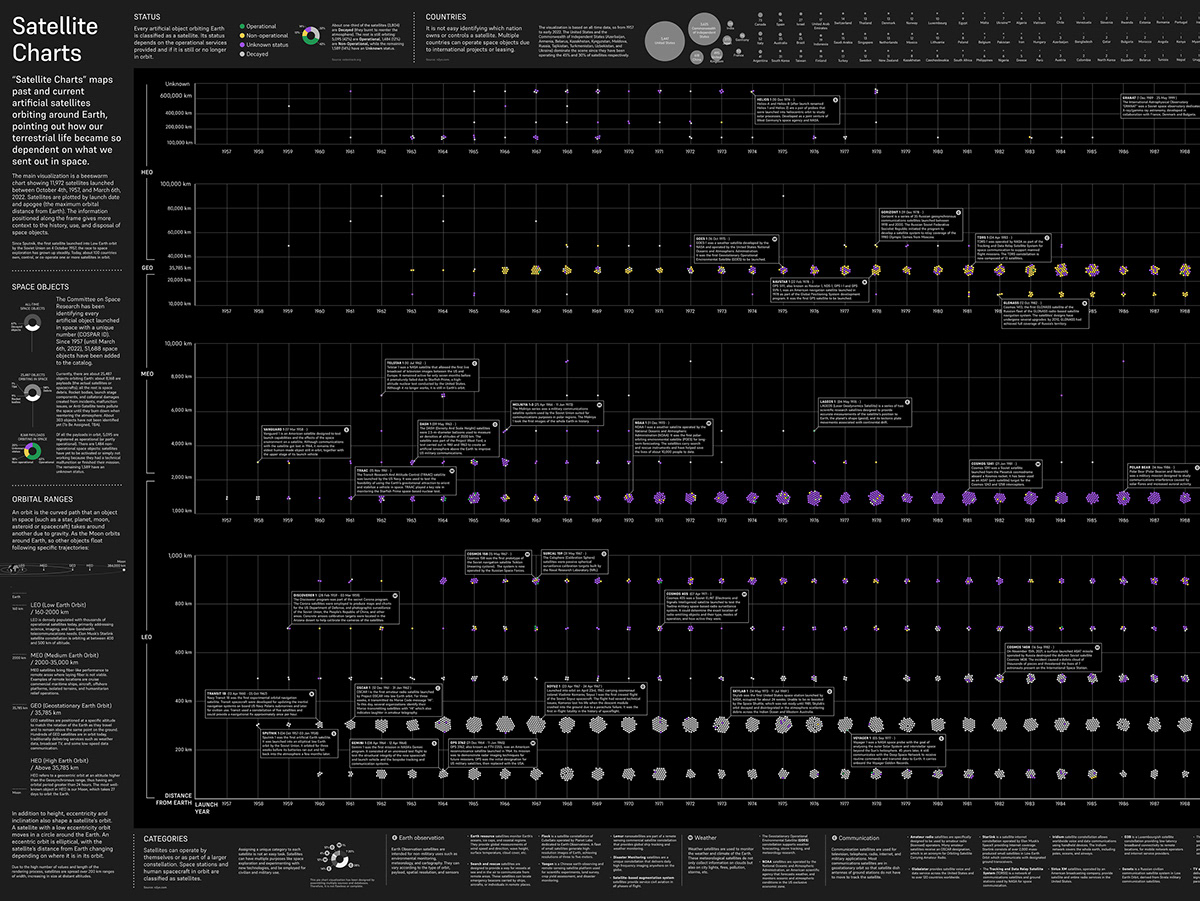
Left side
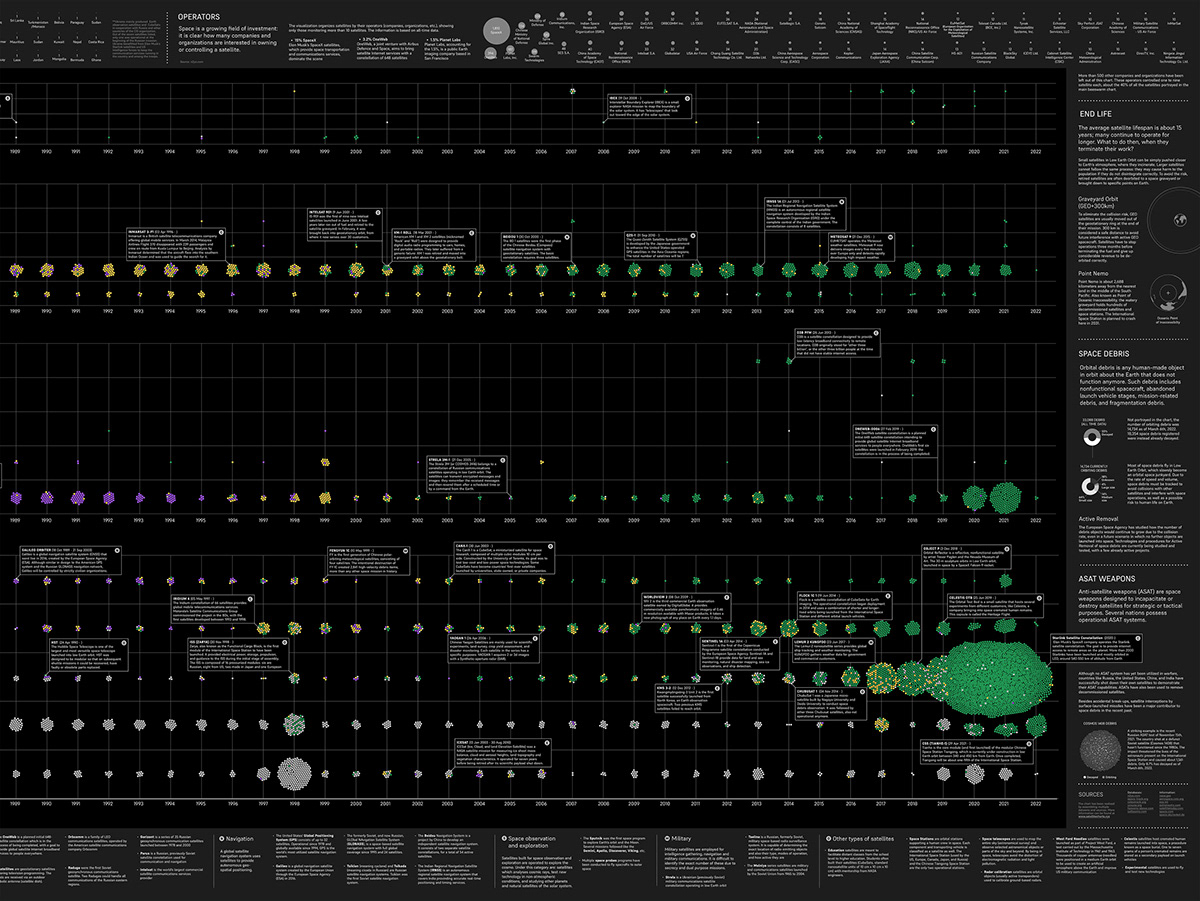
Right side
. . . .

There are three levels of zoom:
1. FULL VIEW
You can browse freely across the chart, clicking on the info boxes to know more about each satellite

2. TEXT VIEW
You can read about the research in the shape of a simple long-form

3. CHART VIEW
You can browse the satellites by their launch years, with the Earth's orbits axis fixed on the left

This is an ongoing project: more charts and topics will be added in the following months, focusing on the geography of launch sites, the past and current debris floating in space, and the names of satellites and missions. The high number of data (combined by merging multiple databases) made it difficult to work with live data as well as coding an interactive visualization. Due to the limited coding skills of the author and the tight deadline, working with a static 2D visualization has been the most optimal solution.
Beeswarm chart powered by RAWGraphs
. . . .


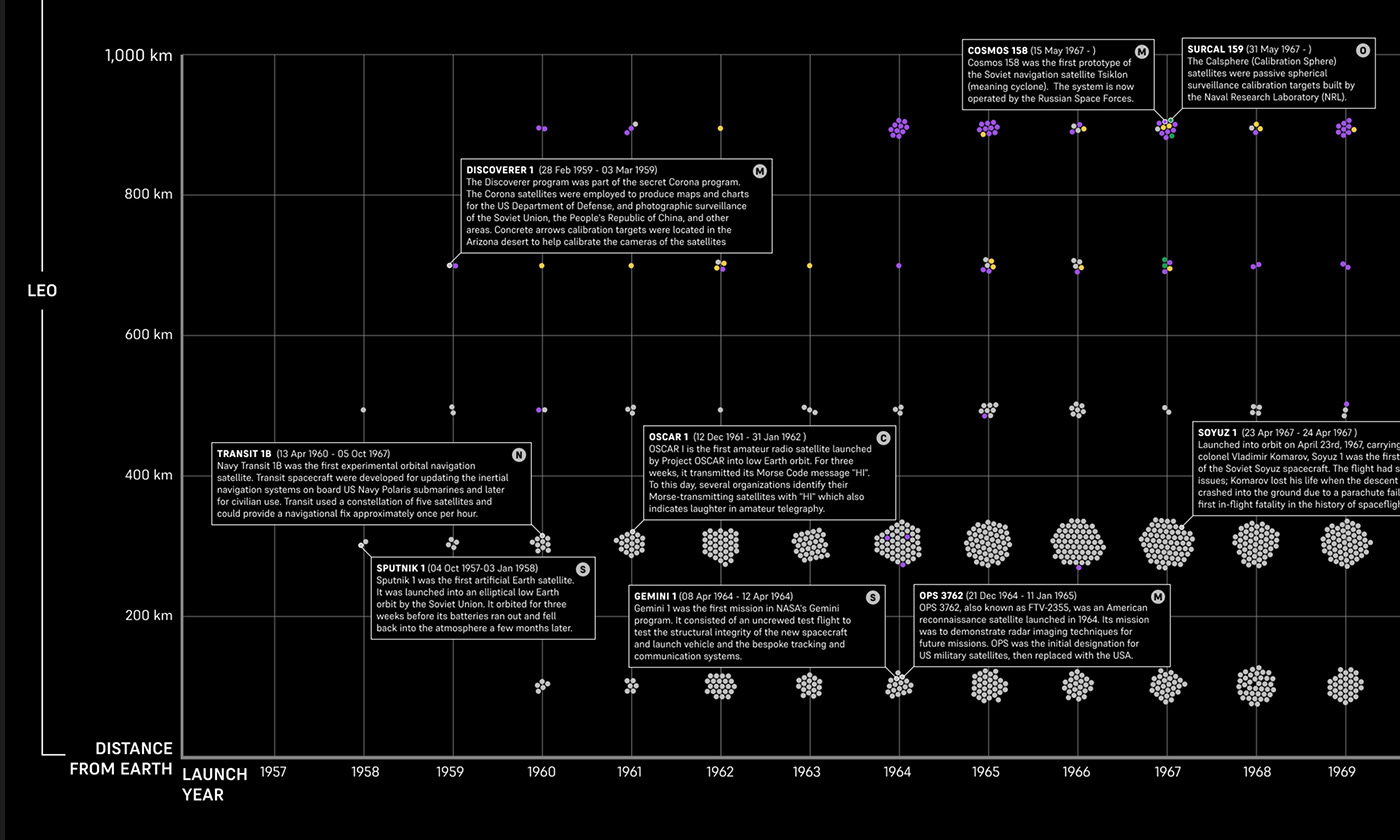
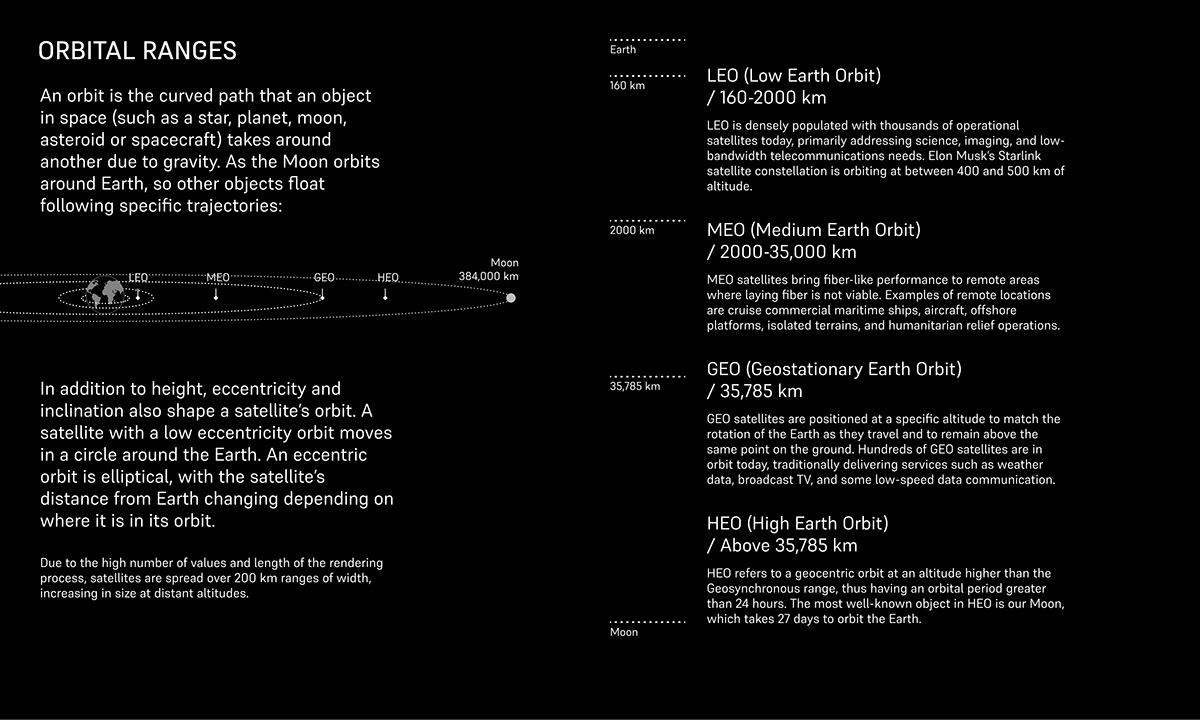


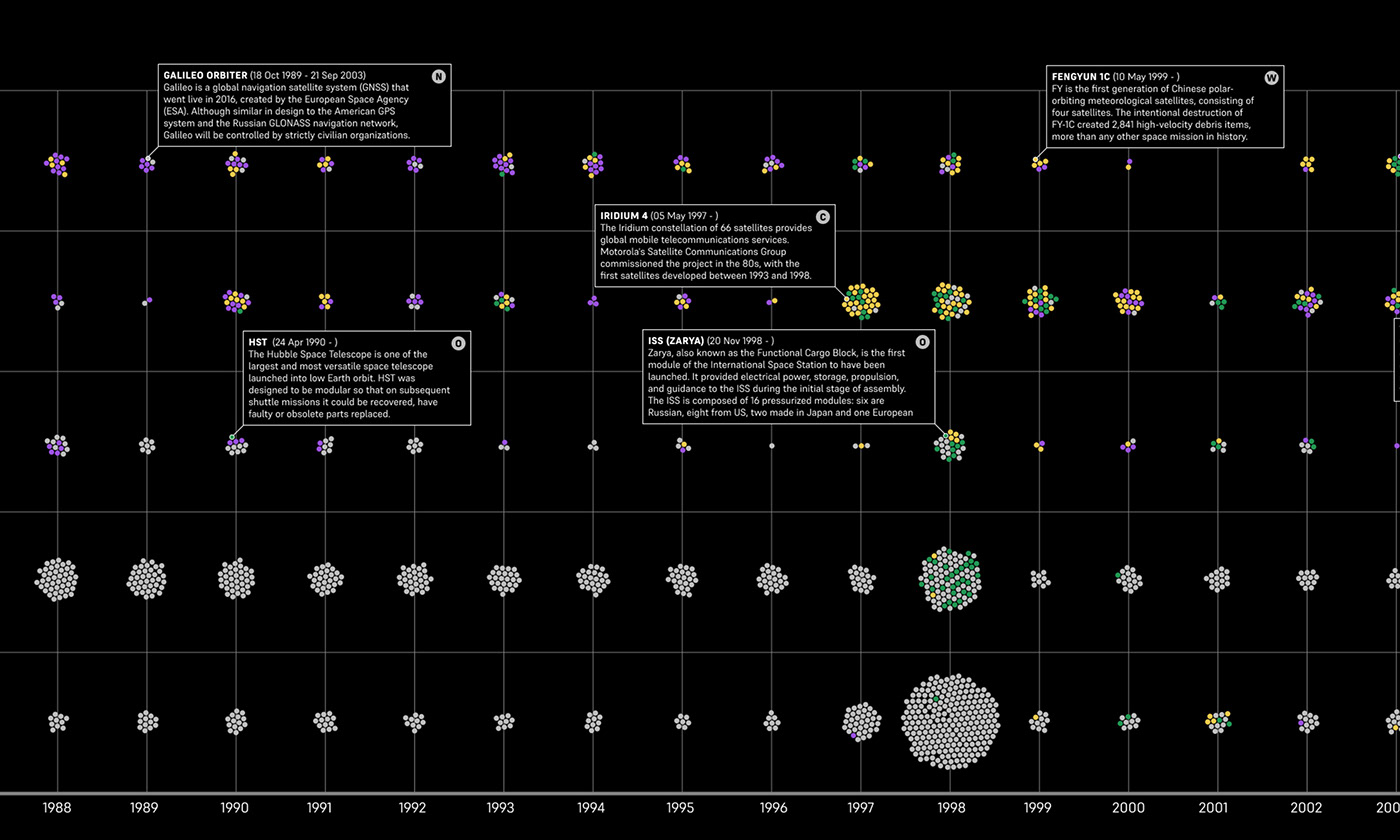





. . . .
“Satellites Charts” has been realised for the Randr Satellite Project, a digital exhibition focusing on projects dealing with political design. Self-organised by two former students from the School of the Art Institute of Chicago, the exhibition included works from designers based in the United States, Pakistan, China, and Italy.
Research, design, and code by Cinzia Bongino


